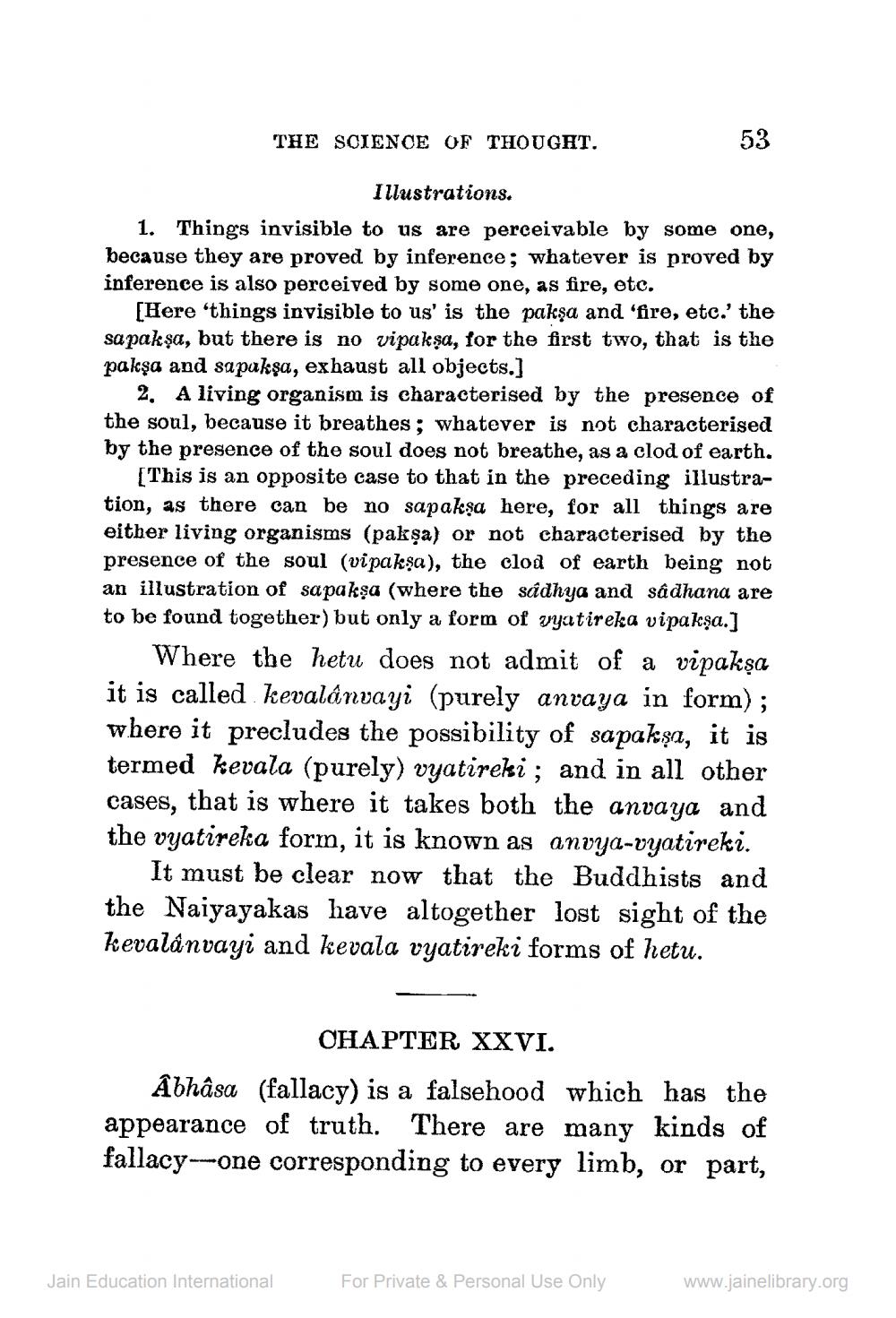________________
THE SCIENCE OF THOUGHT.
53
Illustrations.
1. Things invisible to us are perceivable by some one, because they are proved by inference; whatever is proved by inference is also perceived by some one, as fire, etc.
[Here 'things invisible to us' is the pakşa and 'fire, etc.' the sapakşa, but there is no vipaksa, for the first two, that is the pakşa and sapakşa, exhaust all objects.]
2. A living organism is characterised by the presence of the soul, because it breathes; whatever is not characterised by the presence of the soul does not breathe, as a clod of earth.
[This is an opposite case to that in the preceding illustration, as there can be no sapakşa here, for all things are either living organisms (paksa) or not characterised by the presence of the soul (vipaksa), the clod of earth being not an illustration of sapakşa (where the sádhya and sadhana are to be found together) but only a form of vryatireka vipakşa.]
Where the hetu does not admit of a vipaksa it is called kevalánvayi (purely anvaya in form); where it precludes the possibility of sapakşa, it is termed kevala (purely) vyatireki ; and in all other cases, that is where it takes both the anvaya and the vyatireka form, it is known as anvya-vyatireki.
It must be clear now that the Buddhists and the Naiyayakas have altogether lost sight of the kevalá nvayi and kevala vyatireki forms of hetu.
CHAPTER XXVI. Abhâsa (fallacy) is a falsehood which has the appearance of truth. There are many kinds of fallacy--one corresponding to every limb, or part,
Jain Education International
For Private & Personal Use Only
www.jainelibrary.org




